6th November 2025 in Community News, Press releases, Project news, Supply Chain
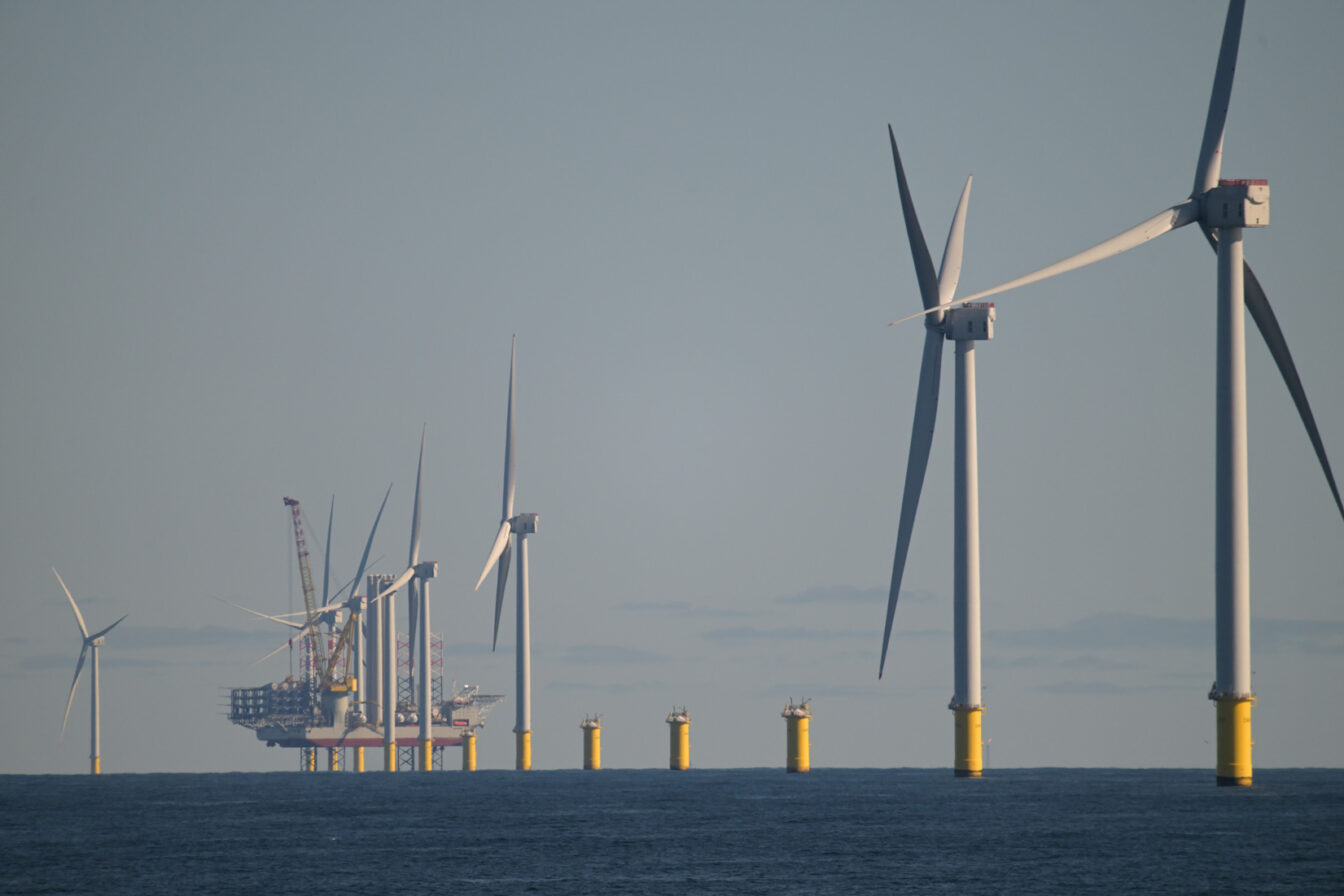
An independent report published today reveals that Dogger Bank Wind Farm, which will become the world’s largest offshore wind farm once fully operational, will boost the UK economy by £6.1 billion during its lifetime and support thousands of UK jobs over the next three decades.
The report, written by economic consultants BVG Associates, finds the £6.1 billion GDP contribution will be driven by significant investment in UK companies, jobs and skills during the lifecycle of Dogger Bank.
At 3.6GW, Dogger Bank will become the world’s largest offshore wind farm when fully operational and will be capable of generating enough power for around 6 million UK homes each year. Already, the project is beginning to generate homegrown renewable energy from initial commissioning at its first phase, which is being transmitted along subsea high voltage transmission cables for use by UK consumers.
The economic impact report was commissioned by Dogger Bank Wind Farm’s equity partners SSE, Equinor and Vårgrønn who are currently constructing the offshore wind farm in three 1.2GW phases at adjoining sites in the North Sea more than 130km from the Yorkshire Coast.
Direct spend with companies in the North-East of England and in the counties of North Yorkshire and East Riding of Yorkshire is expected to total over £3 billion, with hundreds of jobs supported in these regions. To date this has included jobs in companies such as Jones Bros, Bowmer and Kirkland, Boston Energy and Tekmar.
With the project beginning to generate from initial commissioning at its first phase, full-time equivalent (FTE) jobs supported across the UK by Dogger Bank are expected to reach 3,600 over 2025. 1,500 of these jobs will be in the North-East of England and North Yorkshire and East Riding of Yorkshire.
A significant number of UK jobs will also continue through Dogger Bank’s operational life of at least 35 years, with an average of 1,400 full-time equivalent (FTE) jobs expected to be supported over this period, which are predominantly highly skilled. These will also include roles for trainees and apprentices.
Dogger Bank Wind Farm has also committed to investing a further £26 million directly in local communities to enhance science, technology, engineering and maths (STEM) education, and to support vital grassroots community initiatives. This community investment scheme includes a scholarship programme for STEM students, with 123 grants already awarded to students in East Riding of Yorkshire, Redcar and Cleveland and South Tyneside.
Energy Minister Michael Shanks said:
“Clean, homegrown power is the right choice for families and industry right across the country. Wind power is cheaper, cleaner and more secure than new gas – helping us bring down bills for good.
“As shown by this independent report, offshore wind projects such as Dogger Bank will generate billions for the UK, while also delivering thousands of good jobs – showing once again that clean power is the economic opportunity of the 21st century.”
Dogger Bank Wind Farm Project Director, Olly Cass, said:
“People have always been at the heart of everything we do on Dogger Bank Wind Farm. Even from the early days of planning, there was an inherent drive from everyone involved to see what value we could unlock through this extraordinary engineering masterpiece.
”Offshore wind is a global sector with a global supply chain, but this report proves we have the skills, expertise and desire in the UK to fuel the energy transition and create economic value that’s far-reaching. The ripple effects of our UK spend, generating £6.1 billion for the UK economy, can be felt from the Highlands of Scotland, down to the south coast, and plenty more in between.
“BVGA’s report also gives us a chance to reflect on important lessons learned, so we can use Dogger Bank as the springboard for future economic growth in the UK in our development of critical energy infrastructure.”
Alun Roberts, Director of Economics, BVG Associates, said:
“Our independent analysis shows the significant impact of the Dogger Bank Wind Farm. Our economic model shows that the boost to the economy and jobs is sustained through the life of the project. This is vital for sustaining political support for offshore wind.”
Jones Bros senior contracts manager, James Lockwood, said:
“As a company, we are always eager to give our apprentices and trainees valuable on-site experience, and as the world’s largest offshore wind farm, Dogger Bank is a hugely significant project to be a part of.
“The numbers speak for themselves, with five higher apprentices and three trainee engineer apprentices working on Dogger Bank, whilst we also recruited 28 ground worker trainees and 18 plant operative apprentices.
“I know it has always brought everyone from senior managers to trainees and apprentices a great sense of pride to be associated with the scheme.”
BVGA’s report is available here: https://doggerbank.com/wp-content/uploads/2025/11/Dogger-Bank-Wind-Farm-economic-impact-report-by-BVG-Associates.pdf
Dogger Bank Wind Farm’s summary report in response to BVGA’s findings, which includes lessons learned, is available here: Dogger-Bank_Social-impact-report-2025.pdf
21st October 2025 in Community News, Press releases, Project news

- 19th Century ship’s bell belonged to The Masonic vessel that sunk in 1893 and has now been fully restored to its former glory after lying forgotten at the bottom of the North Sea
- Copper-alloy bell will be welcomed to its new home at Brightlingsea Museum in Essex by great-grandson of one of the vessel’s original owner
It had lain undisturbed at the bottom of the North Sea for nearly 130 years but now a historic ship’s bell will toll once again thanks to restoration work commissioned by Dogger Bank Wind Farm.
The 12kg and 15cm high copper-alloy bell was originally installed on The Masonic vessel in 1876, but went down with the ship and its entire crew off the coast of Yorkshire during fierce storms in November 1893. Newspaper reports of the time refer to the remains of passengers and crew from the vessel being found on the beach at Saltburn-by-the Sea during a four-day hurricane
The Great Storm as it was known was blamed for the deaths of 335 people at sea, with over 140 vessels abandoned or foundering including The Masonic, which went down in a stretch of water off the Yorkshire coast
There the bell lay undisturbed on the seabed until 2022 when the team carrying out a subsea survey as part of pre-construction activities on Dogger Bank Wind Farm – set to be the largest in the world when complete – discovered an unexplained form embedded into the floor of the sea.
The object was initially thought to be an unexploded bomb, but onshore inspections revealed a bell-shaped object with the inscription ‘Masonic’. After undergoing specialist restoration work involving X-ray imaging, the maritime treasure will now be housed at the Brightlingsea Museum near Colchester in Essex.
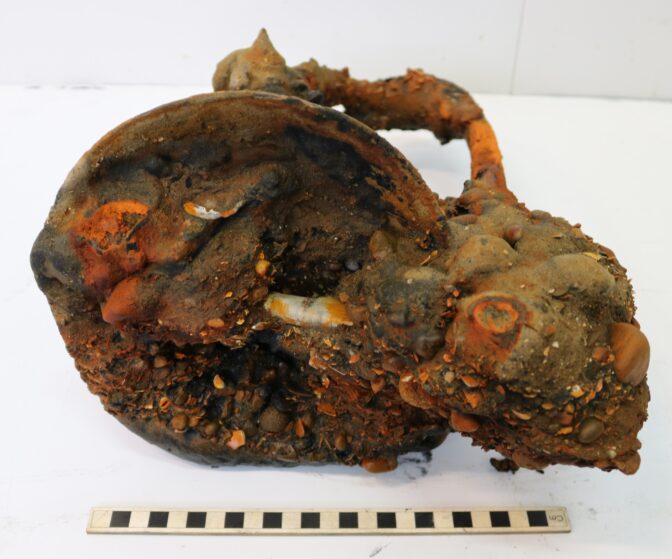
Credit: MSDS Marine
Remarkably the museum was also able to track down the great-grandson of one of the vessel’s original owners, who will be joined by representatives from Dogger Bank Wind Farm for a special unveiling ceremony of the Masonic Bell at the Brightlingsea Museum today (21st October 2025).
The Deputy Receiver of Wreck, Andrea Bailey, worked with representatives from MSDS Marine to uncover the story behind the bell, and how it had come to be nestled into an area of seabed where offshore electricity cables were to be installed over 130 years later.
The bell was correctly registered with the Receiver of Wreck, part of HM Coastguard, but with no-one claiming ownership, it became the property of The Crown and it was agreed its final journey would be back to Brightlingsea for exhibition in the local museum.
Deputy Receiver of Wreck Andrea Bailey, said:
“The fate of the Masonic and her crew was a tragedy, far away from where it first set sail. So it feels right that the bell – the last surviving piece – is returned to where it was built.
“Reuniting objects with their owners or finding a proper home is best done by registering maritime finds with the Receiver of Wreck. By doing so, you can help share history and ensure artefacts end up where they truly belong.”
Dogger Bank Wind Farm is being built in three phases off the Yorkshire coast by developers SSE, Equinor and Vårgrønn and once fully complete in 2027, will be capable of powering up to six million homes annually.
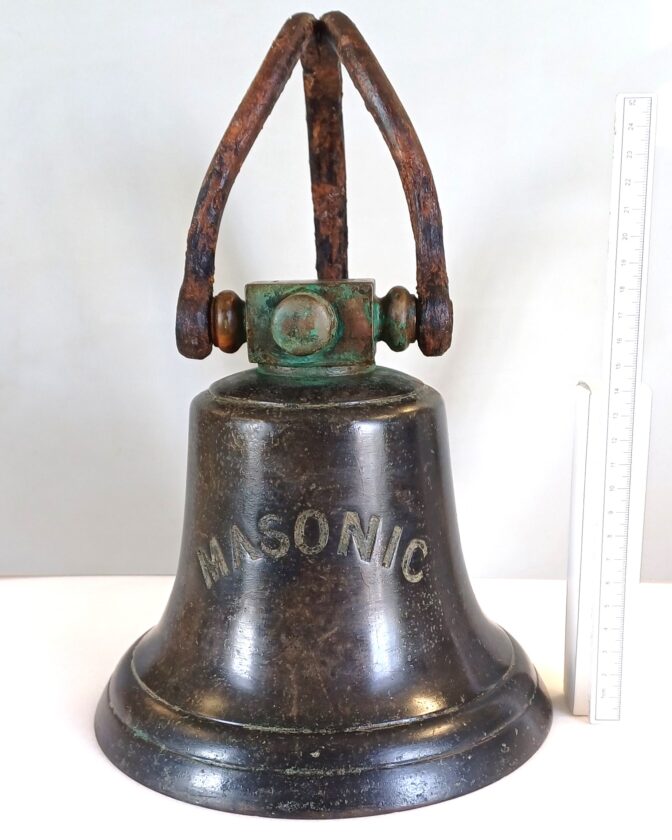
Credit: MSDS Marine
Lizzy Reynolds, Lead Offshore Consent Manager for Dogger Bank Wind Farm, said:
“When we set out to build the world’s largest offshore windfarm, we had no idea that our careful archaeological surveys would yield up this historic gem from the depths of the ocean floor.
“We feel it is the right thing to do to fully restore the Masonic Bell to its former glory as a tribute to those brave mariners who perished on board the ship during violent storms of 1893. Our delivery partners Haskoning and MSDS Marine have brought the bell back to life and it will now have a new dry home at the Brightlingsea Museum.”
Richard Dove, great-grandson of Captain William Dove, one of the owners of the Masonic, said:
“Raising the Masonic bell from the deep after its 132 years of seabed slumber is a tangible link to my great-grandfather.
“Hopefully the fully restored bell is testament to those brave souls that sadly perished in 1893, and we are deeply grateful to everyone who has breathed new life into this wonderful piece of maritime history.”
Carola Del Mese, Conservator at MSDS Marine and Heritage led the restoration of the 19th century bell on behalf of Dogger Bank Wind Farm contractor, Haskoning.
Carola added:
“Conserving the Masonic bell has been a technical challenge and a privilege, and I’m honoured to have been part of its return journey home to Brightlingsea as a commemoration to the crew and an addition to local history.”
Local history experts from the Brightlingsea Museum believe The Masonic vessel was built by shipbuilder Robert Aldous, to transport coal, building materials and food during the 19th Century.
Margaret Stone, Brightlingsea Museum Curator, said:
“We are delighted to welcome the bell from the Brightlingsea-built barge, the Masonic, to the museum. This is the first artefact for our collection which comes from an actual vessel built in the town during the Nineteenth Century. What makes it even more special are the links the Masonic has to an organisation and families still in the town - and even the museum itself. We are most grateful to all that have made this possible.”
Image caption: Three generations of the Dove family attended the unveiling of the Masonic ship’s bell at Brightlingsea Museum.
26th August 2025 in Press releases, Project news
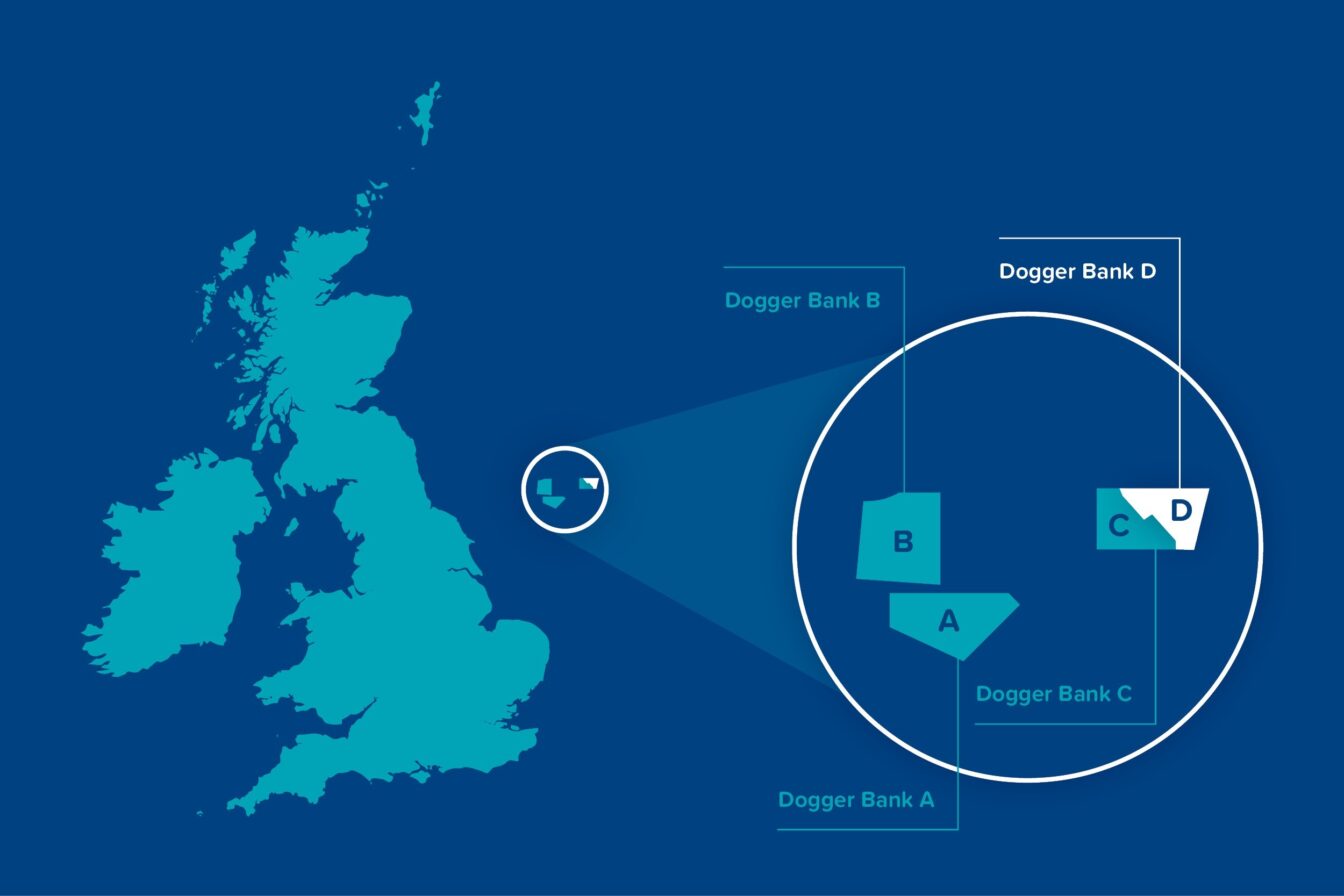
- Joint venture developers SSE and Equinor finalise seabed lease with The Crown Estate to progress Dogger Bank D offshore wind project, following establishment of terms last year.
- This allows capacity of Dogger Bank C lease area to be maximised, unlocking up to 1.5GW of additional renewable electricity capacity from the 3.6GW Dogger Bank Wind Farm.
- Dogger Bank D is a proposed fourth phase of the world’s largest offshore wind farm in construction – and can make the world’s biggest offshore wind farm even bigger.
- SSE and Equinor each own 50% of the proposed Dogger Bank D development.
SSE and Equinor have finalised a seabed lease with The Crown Estate to progress the Dogger Bank D offshore wind project.
This marks the latest important milestone in the development of a proposed fourth phase of the world’s largest offshore wind farm, the 3.6GW Dogger Bank Wind Farm currently in construction off the coast of England in the North Sea.
The lease allows Dogger Bank D’s 50:50 joint venture shareholders SSE Renewables and Equinor to maximise the potential renewable electricity generation capacity from the eastern portion of the existing Dogger Bank C seabed lease area, located around 210km off the Yorkshire coast.
Delivery of Dogger Bank D is subject to it securing a Development Consent Order as well as a final investment decision by partners SSE Renewables and Equinor.
A fourth phase has the future potential to unlock an additional 1.5GW in renewable electricity capacity at Dogger Bank for Britain’s energy system and would make the world’s biggest offshore wind farm even bigger.
Developers SSE Renewables and Equinor previously established terms for Dogger Bank D with The Crown Estate in July 2024. Implementation of these commercial terms was subject to the conclusion earlier this year of the plan-Level Habitats Regulation Assessment (HRA) associated with The Crown Estate’s wider Capacity Increase Programme. Dogger Bank D will work collaboratively with The Crown Estate and other stakeholders to deliver the environmental compensation and mitigation required by the lease.
The Dogger Bank D project recently concluded its eight-week statutory consultation during which project proposals were presented to the public. These include plans for up to 113 installed offshore wind turbines on fixed bottom foundations as well as up to two offshore substation platforms at the 262km2 seabed site. Also proposed is associated export and inter-array subsea cabling connecting with onshore infrastructure in East Riding of Yorkshire for transmission of the electricity generated by the wind farm to Britain’s national grid.
Steve Wilson, Director of Offshore Development and Construction, SSE Renewables said:
“We’re delighted to have finalised an amendment to the existing Dogger Bank C seabed lease agreement with The Crown Estate to unlock additional clean energy potential from the site’s existing seabed lease. In amending the lease in this innovative way, we’ve taken significant strides to progress Dogger Bank D as a proposed fourth phase of the world’s largest offshore wind farm in construction, Dogger Bank Wind Farm.
“Concluding this process is testament to the shared innovation of shareholders SSE and Equinor along with The Crown Estate to enable a framework that allows us to increase the generation capacity potential of the site. We look forward to continuing Dogger Bank D’s progression as a nationally significant offshore wind project for the UK and building on our vision to the make the world’s biggest offshore wind farm even bigger.”
Melissa Read, Head of Regional Development – UK Renewables, Equinor, said:
“Reaching this milestone for the Dogger Bank D development provides future opportunity to unlock more value and volume from the world’s largest offshore wind farm whilst building on our expertise and presence in the North East of England.
“The UK is a core strategic market for Equinor and Dogger Bank D demonstrates how there is the potential to further develop our future UK portfolio by having the opportunity to increase future value from quality existing assets. We look forward to maturing the project further with SSE and continue to support the UK’s offshore wind and net zero ambitions.”
Gus Jaspert CMG, Managing Director, Marine at The Crown Estate, said:
“As one of the world’s largest offshore windfarms in construction, Dogger Bank showcases the UK’s global position in deploying this vital technology to deliver clean and secure energy for millions of people. This new approach to increase capacity on the existing windfarm site that The Crown Estate has agreed with Equinor and SSE, through Dogger Bank D, will enable more communities to benefit from the energy it creates and the jobs it supports.
“As with all developments, we carefully consider the important responsibility to balance the needs of energy and nature and have embedded environmental compensation measures agreed by the Secretary of State for Energy Security & Net Zero into our leasing for this windfarm. As development of our leading Marine Delivery Routemap continues, this collaborative approach will support future prioritisation decisions and avoid nature impacts as much as possible.”
Dogger Bank D is one of seven UK offshore wind farm projects with existing seabed leasing agreements that have been identified for potential generating capacity increases as part of The Crown Estate’s Capacity Increase Programme to unlock up to 4.7GW of potential new green electricity production.
A Statutory Consultation with community members in East Riding of Yorkshire and with stakeholders recently concluded on the offshore and onshore proposals for Dogger Bank D as well as on the outcomes of preliminary environmental assessments. Feedback from this consultation process will help inform the development of a final application for a Development Consent Order which is expected to be submitted by SSE Renewables and Equinor to The Planning Inspectorate in due course.
ENDS
About Dogger Bank D
Dogger Bank D is being developed as a proposed up to 1.5GW fourth phase of Dogger Bank Wind Farm by a 50 / 50 joint venture between SSE and Equinor, two of the world’s leading companies in the development and operation of offshore wind energy. Both companies were involved in the design and planning consent of the 3.6GW Dogger Bank Wind Farm, which is currently under construction in the North Sea.
Dogger Bank was awarded rights in The Crown Estate’s Offshore Wind Leasing Round 3 and is currently under construction in three 1.2GW phases: A, B and C. Dogger Bank Wind Farm is a joint venture between SSE Renewables (40%), Equinor (40%) and Vårgrønn (20%).
17th July 2025 in Community News, Press releases, Project news
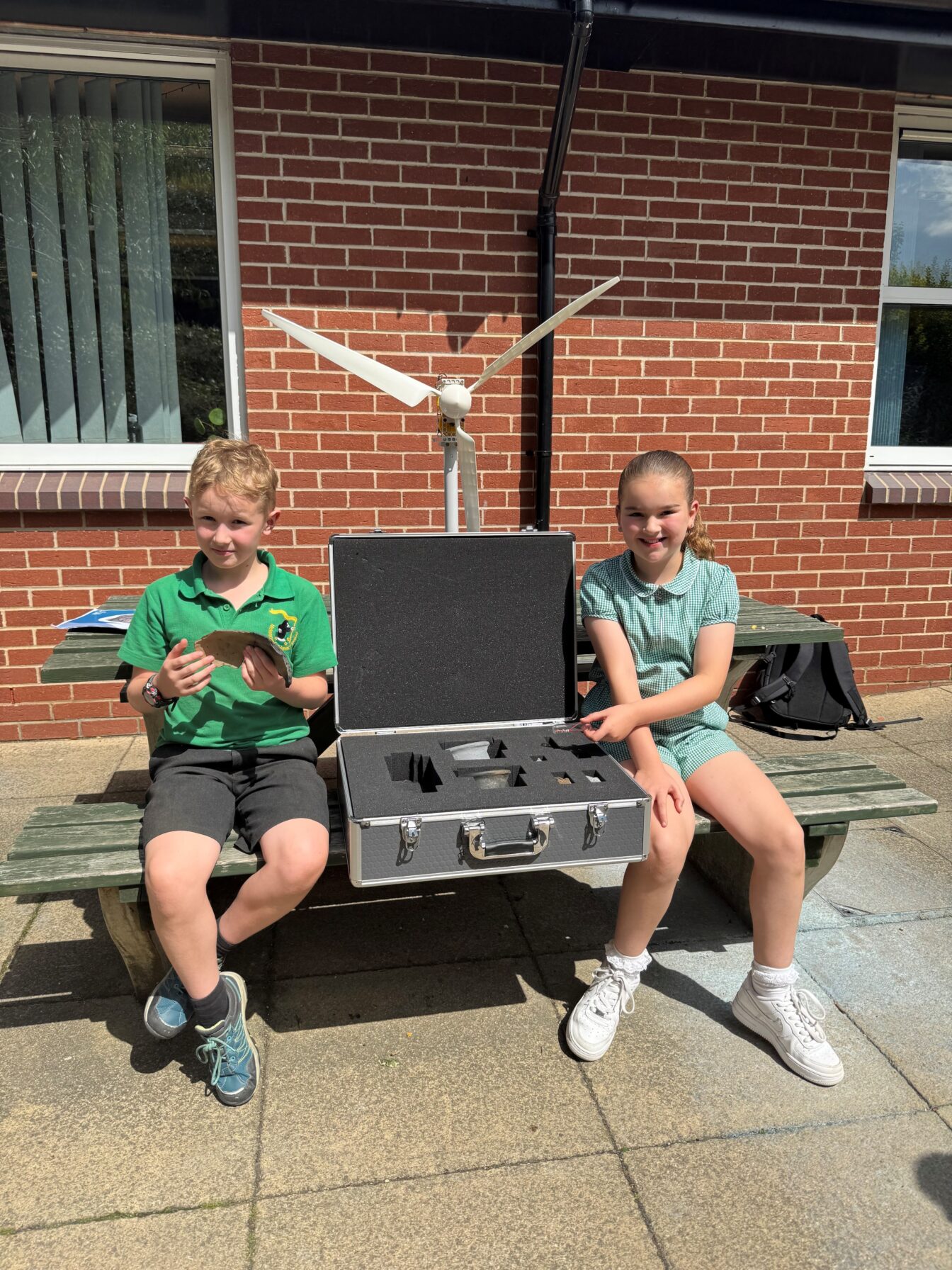
- Education pack contains handmade replicas of historical artefacts unearthed during archaeological excavations during construction of Dogger Bank Wind Farm.
- The local education pack includes replicas of a 6,000-year-old flint arrowhead, an Iron Age or Anglo-Saxon glass bead, an Iron Age to Roman bone comb and pottery that is thought to date back more than 2,000 years.
Schoolchildren across East Riding will be able to get their hands on replicas of key historical artefacts that were uncovered during the construction of Dogger Bank Wind Farm, following the launch of a new education pack.
The education pack contains handmade replicas of some of the key findings from 22 excavations, undertaken on the wind farm’s 30km cable route from Ulrome to its onshore convertor stations near Beverley. It includes 3D printed and hand-painted recreations of a 6,000-year-old flint arrowhead that was unearthed near the village of Beeford, an Iron Age or Anglo-Saxon glass bead excavated in Ulrome and an Iron Age to Roman bone comb discovered in Leven.
The Dogger Bank-funded education pack will be managed by the East Riding School Library Service.
Councillor Victoria Aitken, East Riding Council’s cabinet member for children, families and education said:
“The collaboration between education and business is leading a cultural change so children can be trailblazers in their careers.
“This new history pack was officially launched at Molescroft Primary School, where pupils had the opportunity to hear about the construction of the wind farm, and handle the replicas as part of their ongoing work on Anglo Saxons. I look forward to it being rolled out across more schools in the East Riding, and more pupils benefitting from this unique and fascinating education.”
Rachel Lawrence, Stakeholder Engagement Manager for Dogger Bank Wind Farm, said:
“Unearthing the rich history of Holderness has been an unexpected and exciting part of our construction journey.
“Our experts from AOC Archaeology carried out 22 separate excavations along our cable corridor and invested 26,000 hours preserving fragments of local history.
“It’s our privilege to be able to share this information with schoolchildren, as we bring their local history to life in the classroom through our education pack.”
An online exhibition detailing historical finds from the construction of Dogger Bank Wind Farm can be accessed by visiting www.doggerbank.com/archaeology. The online exhibition features an interactive map to explore 22 excavated sites alongside a wealth of information about AOC Archaeology’s wider work in the East Riding of Yorkshire.
23rd June 2025 in Press releases, Project news

- Statutory consultation phase launched on 10 June to give communities and other stakeholders a chance to have their say on project proposal for Dogger Bank D.
- In-person events to take place at key locations in East Riding of Yorkshire between 24 and 28 June.
Members of the public are being invited to have their say on plans for a new offshore wind farm project at six in-person events this week.
Dogger Bank D is a proposed project in the North Sea which would be located around 210km off the coast of England. Joint venture developers SSE Renewables and Equinor are inviting community members and stakeholders to have their say on proposals for the project, as part of a Statutory Consultation between 10 June and 5 August.
Six in-person events will be held at the following times and locations:
Skipsea Village Hall, 3pm – 6.30pm.
Leven Sports Hall, 2pm – 7pm.
Cottingham Civic Hall, 10am – 2pm, and Walkington Village Hall 3pm – 6pm.
Toll Gavel Church Hall, Beverley, 10am – 2pm.
Beverley Memorial Hall, 10am – 2pm.
Sophie Large, Senior Project Manager for Dogger Bank D, said:
“We would encourage anyone who’s interested in our proposals to come along to one of our events to speak with a member of our friendly team. At the events you can expect to talk to a team that includes all of the specialisms involved in Dogger Bank D development which ensures that in-depth conversations can take place.
“At this stage of consultation, the proposals presented are not our final application. They reflect input from earlier consultation rounds as well as our preliminary environmental and technical assessments. We encourage the community to come forward to review and share their feedback as local knowledge is invaluable in helping us refine our plans further.
“We’re also excited to share more information on our ideas for building a positive legacy for the project. We’re committed to ensuring that local communities are heard and respected as we develop our proposals to build the energy generation assets that are critical to securing energy security and affordability in a net zero world.”
This latest round of consultation by the developers of Dogger Bank D will outline offshore and onshore proposals, as well as outcomes of preliminary environmental assessments.
The proposals include plans for offshore infrastructure for renewable electricity generation as well as offshore and onshore infrastructure for transmission of the electricity generated by the wind farm.
Out at sea, the project proposes an offshore wind farm array covering a site of 262km2 with up to 113 installed offshore wind turbines. Each turbine would be installed on a fixed bottom foundation.
The offshore application also proposes up to two offshore platforms, as well as associated export and inter-array subsea cabling that would export power from the offshore wind farm to Britain’s national grid at a landfall point near Skipsea, in East Riding of Yorkshire.
From the Skipsea landfall, underground cables would transmit renewable power along a 55-kilometre route to an onshore converter station near to a new onshore substation being developed by National Grid Electricity Transmission near Cottingham, north of Hull, called Birkhill Wood.
The project is also proposing potential plans to co-locate Energy Storage and Balancing Infrastructure at the site of the proposed onshore converter station.
The proposals follow extensive environmental studies and feedback received from earlier stages of engagement.
Feedback from the consultation, which comprises six local in-person events and two online sessions, will be gathered over an eight-week period ahead of the consultation closing on Tuesday 5 August.
Developers SSE Renewables and Equinor will use this feedback to help inform a final application for a Development Consent Order for up to 1.5GW of installed offshore wind capacity at Dogger Bank D.
The delivery of the Dogger Bank D project is subject to it securing a Development Consent Order as well as a final investment decision by partners SSE Renewables and Equinor.
The project team encourages all feedback during the eight-week consultation phase. Feedback will be accepted until 11.59pm on Tuesday 5 August.
All consultation materials including the consultation brochure, maps and feedback forms are now available to view and download at www.doggerbankd.com. Hard copies and alternative versions of consultation documents can also be requested directly from the project team by email or freephone. Alternatively, consultation materials can be viewed or collected from community access points, please check opening hours before visiting. For more information on Dogger Bank D, or how to engage with the consultation, please visit www.doggerbankd.com, call the freephone number on 0800 254 5029, or email contact@doggerbankd.com.







